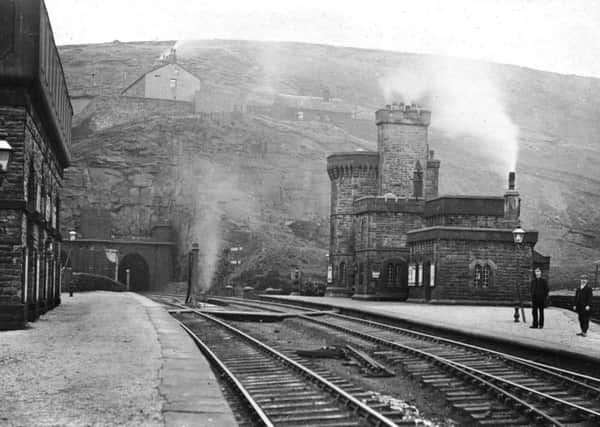Angela Smith: Think like the Victorians if road and rail is to be fast-tracked


The National Infrastructure Commission has admitted that “Sheffield’s economy… is small compared to that of Leeds and Manchester, with lower productivity and skills levels”, and that – this is the important point – “the city is less well linked to the surrounding region, in particular with the Pennines limiting connectivity to the west”.
It also points out that “the lack of a good transport link between the two means that their economies are largely separate from each other”. That is a big problem for the Northern Powerhouse.
Advertisement
Hide AdAdvertisement
Hide AdOnly 10,000 vehicles a day travel between Greater Manchester and South Yorkshire, whereas 55,000 travel between West Yorkshire and Greater Manchester. There may be slight differences in population, but the only real explanation for the disparity must be the poor transport links between the former two regions.
Tata Speciality Steels has a dedicated service centre in Bolton, which is obviously on the other side of the Pennines from its Stocksbridge factory, and the company experiences real logistical difficulties precisely because of the poor links between the two areas.
There are three road routes across the Pennines. We have the A57, part of which is known as the Snake Pass. Incidentally, it was not given that name because of its winding nature; it was named after a feature on the Duke of Devonshire’s coat of arms. It is nevertheless difficult to use. Heavy goods vehicles find it impossible. Even cars can find it difficult. It is, after all, a mountain pass.
The A628 is therefore the major road across the Pennines between Sheffield and Manchester, but the height and exposure of the road often create problems during poor weather in winter.
Advertisement
Hide AdAdvertisement
Hide AdWe also have the M62, but using it to go from Sheffield to Manchester involves making a massive detour. I used the AA route planner and worked out that if you use the M62 to go up from Sheffield, across the Pennines and down to Manchester, the distance is 72.5 miles and the journey takes one hour and 42 minutes. If you use the A628, the distance is only 37.8 miles, but the journey is only 20 minutes shorter.
As for rail, the average speed of rail travel across the Pennines between the major cities is below 50 mph.
I would be the first to acknowledge that progress is being made. Proposals are on the table for a new road tunnel and a new rail tunnel involving a high-speed route across the Pennines. I welcome those proposals; I am not playing politics. The feasibility work needs to include the impacts on nearby land use and economic growth, and there are the environmental concerns relating to a long road tunnel. I am hopeful that if the proposed new road tunnel is feasible and if the economic case can be made, the Government will press ahead.
As for the new rail project, we have heard that the Government plan an HS3 route from Manchester to Leeds, and I need to make it clear and put it on the record that any such project cannot be allowed to miss out South Yorkshire. It is absolutely critical to the economic resilience and redevelopment of the north of England that the new rail route serves South Yorkshire and, potentially, the south bank of the Humber as much as it serves Leeds and the north bank of the Humber.
Advertisement
Hide AdAdvertisement
Hide AdA new tunnelled rail link could come out in the Penistone area, probably in my constituency, and spur not only up to Leeds and over to Hull, but down into South Yorkshire, Sheffield, Rotherham and potentially beyond. The developments on the table are exciting, but we are adamant in South Yorkshire that we want to be included in the Government’s options for rail and road.
Some of us have been campaigning for years for a new rail route across the Pennines. We initially focused on reopening the old Woodhead route, but we lost that campaign and electric cables have now been established in the old 1953 tunnel by National Grid. It is clear that we did not lose the argument about the need for new rail infrastructure; however, the connections suggested so far are not to Sheffield, which is what the campaign for a new Woodhead route was always about, or to South Yorkshire, but to Leeds.
I want to finish by mentioning the achievements of our Victorian forebears. I mentioned the Woodhead line earlier, so let us look at the facts. It was built by the Victorians, and when the first railway tunnel was completed in 1845, it was one of the longest in the world. The second tunnel was completed in 1853. Both would potentially be usable even now, but for their being no longer in maintenance. That is a great testament to the foresight and engineering skills of our Victorian ancestors. As far as I am concerned, they managed it, and so can we.
A 30-year appraisal in the cost-benefit analysis of the need for these links is not adequate; we need an analysis and an economic case that understands that we are building for the long term. We need to look at a 100-year case for building this new infrastructure.
Angela Smith is the Labour MP for Penistone and Stocksbridge who led a Commons debate on transport. This is an edited version.